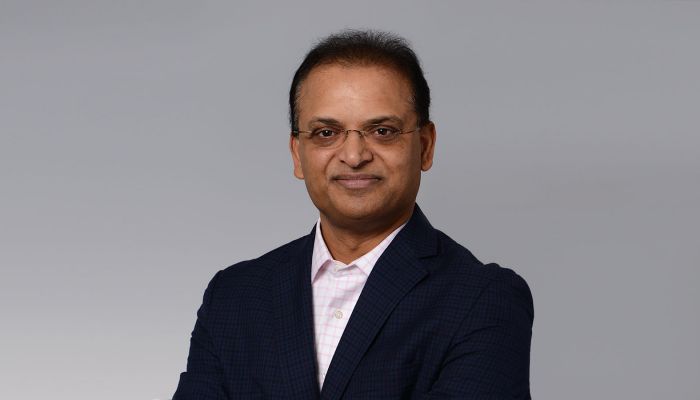Our CEO, Darren Kimball, recently caught up with Bala Sathyanarayanan, the Executive Vice President and Chief Human Resources Officer of Greif, Inc.
With over twenty years of HR experience at blue chip companies like Xerox Corporation, Hewlett Packard, Coca-Cola, and United Technologies Inc., Bala Sathyanarayanan delivers engaged workforces that define and execute on those firms’ business strategies. He spoke about creating policies and hiring practices that attract diverse candidates during difficult times.
DK: Talk a little bit about Greif and your current role.
Bala: Greif (rhymes with “life”) is a 145-year-old, Fortune 500 size company with a presence in 45 countries that serves customers’ needs. It is an essential business and is one of the top industrial packaging companies in the world. My job is to ensure that we deliver a world-class, diverse, and engaged workforce that can execute on Greif’s strategic priorities. My passion is leadership, purpose-driven teams, and leveraging digital technologies to deliver an agile world-class global organization.
DK: Greif has a unique mission related to thriving communities, zero harm environments, and engaged and diverse workplaces, all while winning the war for talent. I’d love to hear a deeper perspective on that mission and some of the major initiatives that are underway to realize those goals.
Bala: Greif’s vision is to be the best performing customer service company in the world. We use a business strategy called Build-to-Last. Greif is a 145-year-old company, and we are laying the foundations for the next 145 years. Now, this business strategy has four foundational pillars. Pillar number one is about creating thriving communities. You do this by committing to each other to achieve zero harm, maintaining top-tier colleague engagement, and enriching our culture through diversity, equity, and inclusion. We believe if we create a culture where colleagues can bring their whole selves to work, they will take care of our customers. Pillar number two is all about delivering legendary customer service. We need to create trust with our colleagues and customers. We do that by creating enhanced value through a solutions-based approach to satisfying our customers’ needs. We earn trust and loyalty through communication, speed and fulfillment and we enable 24/7 easy and transparent service through technology. We also want to protect our future, which is pillar number three. We want to improve energy efficiency, raw material minimum and renewable energy to make products that support a circular economy. And if we can deliver legendary customer service and do the right things, we are confident that customers will provide Greif with an opportunity to serve them again and again. Ensuring financial strength, our fourth pillar is all about investing appropriately, executing well, and delivering accelerated returns.
DK: How does your role in HR engage with these pillars?
Bala: The Human Resources function impacts every aspect of our build to last strategy. We want to ensure that every colleague who comes into the organization leaves at the end of the day feeling more engaged and energized having made a difference. We want to provide them with not just a safe work environment, but an engaging environment where they can bring their whole selves to work every day. We want to create an inclusive environment, (using our DE&I framework) and we want every colleague in the organization to feel safe, welcomed, celebrated, and cherished. We want to hear their voice and for them to work with their leaders to build trust and loyalty. We measure this engagement by partnering with Gallup. We are proud to say that after some work, we are now one of the top tiered industrial manufacturing companies in the world in Employee Engagement.
We also deliver on our “build to last” strategy by having a learning culture. We call it “lead to last”, where we package learning together. Irrespective of what level or position, you own the company, we support our colleagues in developing their skills and building rewarding and enriching careers. You’re seen as a leader in the organization. And this “lead to last” learning strategy is part of our GU, Greif University, the name given to our learning and development framework. Colleagues take courses via GU, linked to the “build to last strategy”. GU will provide the foundation for an environment of continuous learning where colleagues have the opportunity to learn, grow, thrive, and drive enhanced performance outcomes as a result.
DK: One of the biggest challenges in business right now is the labor challenge. It makes it difficult to accomplish goals around diversity. I’m wondering about some of your practical strategies.
Bala: What we are doing is something different and unique and can be uncomfortable for some because it is not how it has not been done in the past. First, we have diversified the pool and sources through which we bring in talent by expanding our relationship and partnerships with universities, organizations, local communities, and inclusion of immigrants, minorities, and refugees, many of whom came from Afghanistan. We made the process of applying for a job seamless, from the time you apply, to the time you get an interview scheduled. We’ve cut the time to 15 minutes. We make it easy to apply for a job right on your phone, you just text a number. Once you apply for an interview, we focus on the experience in a way that makes the candidate feel safe, welcomed, celebrated, and cherished. As part of the process, once they are clear, we accelerate drug screenings, background verification investigations, everything. What used to take three weeks, we do in five days. We find it challenging, but we are leaving no stone unturned. Simplicity is the key to success with today’s candidates.
DK: You have a big investor/analyst day coming up. What is your role in that?
Bala: We will not just be speaking to the investor community about the business strategy, but the human capital implications. We will unveil our human capital strategy. I’m also excited to ring the bell at New York stock exchange.
DK: Companies are just starting to wake up to the importance of talking about human capital strategies with their investors. It is good to see Greif out in front. For those who don’t quite see it yet, help us understand the importance of human capital strategy as a driver of long-term corporate success?
Bala: I think that’s a very relevant question, and it is a question that needs to be on the mind of every HR leader. It is true that I am a Human Resources leader, but I see myself as a business leader first, with a focus on HR. For example, we recently went through a CEO transition. After a thorough internal and external search, we identified an incumbent who was groomed to take over as CEO. For two other incumbent candidates, we found alternative ways of developing them. Our retiring CEO has now become the Executive Chairman. The transition was seamless.
With the new CEO, we are developing an enterprise strategy to prepare Greif for the future – we call it the Build-to-last strategy. For the four foundational pillars that I spoke about earlier, we must bring it to life for our colleagues and customers. We have a strategy through 2030 for each foundational pillar. Our business model is all about how we create and capture value in the future. The business model must be connected to an operating model, and this is where HR has a key role to play in defining the organizational design, structure, and talent development. HR is integrated at every step of the way to make that happen.
DK: What advice would you offer for those in leadership positions and to other companies that perhaps aren’t as far along?
Bala: Leaders can be very uncomfortable being vulnerable. It’s okay to say I don’t know. Lean in and ask the question: Can you educate me on how this comes together in the business unit or how this business makes superior margins? Sometimes we hesitate to ask the business questions. Let’s not hesitate. Because when we asked the questions of our business leaders, they realize they should be asked the question. It’s about time we get comfortable being uncomfortable.
DK: Thank you for sharing your time! Any final thoughts before we go?
Bala: One piece of advice, which a mentor of mine once shared with me, is to always deliver with excellence. Be clear about what problem you’re solving, which is another way of saying, understand the business goals. Maintain your composure through every crisis you encounter and always be optimistic.









